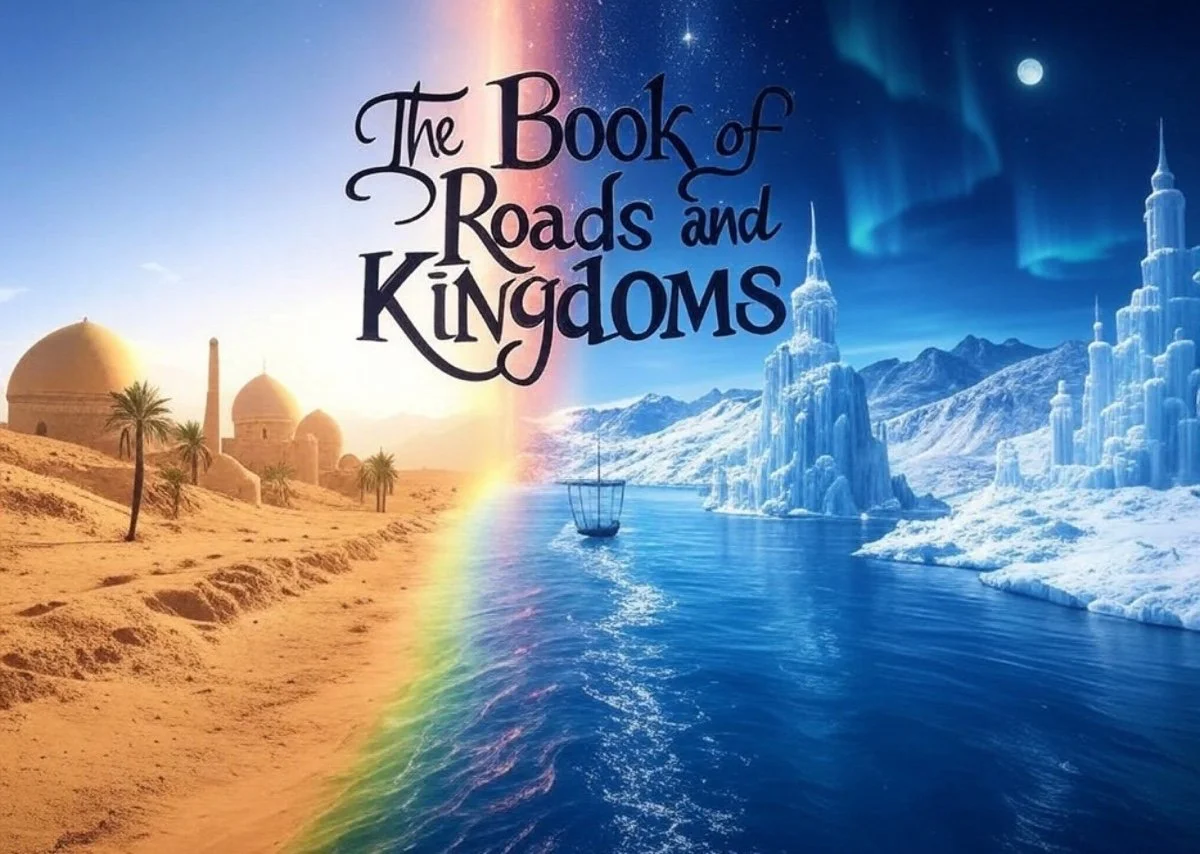Why I Wrote The Book of Roads and Kingdoms
Jewish memory, sacred storytelling, and the map that wouldn’t let go
I’ve always believed that stories are more than entertainment. They’re maps.
They tell us where we came from. They hint at where we’re going. They carry the memory of ancestors, the shape of prayers, the fears we don’t name and the futures we dare to imagine.
But somewhere along the way, I realized that the Jewish map of the world—the one I grew up with, filled with longing and exile and diaspora—was missing pieces. Not just lands, but legends. Not just names, but kingdoms.
How did we get where we are? How did the Jewish people radiate our from a Babylonian center to the four corners of the globe?
What was the role of the last great Jewish sovereign power in the Medieval world, the Khaganate of Khazaria, its very name shrouded in mists?
Where were the Jewish epics?
Where were the lost tribes who never forgot?
Where were the prophets on horseback, the mountain Jews, the vanished courts where Torah still ruled?
I started writing The Book of Roads and Kingdoms to find them.
It began with a name.
I stumbled across a real historical figure: Josiah ben Zakkai, a scion of the House of David, mentioned briefly in Geonic records. The future Anti-Exilarch, the patron of the legendary philosopher Saadia Gaon, and yet about his young life, that wasn’t much at all. Just a name. A title. A trace.
But I couldn’t stop wondering: What would it mean to grow up in the Line of the Exilarchs, knowing you were descended from King David? What would it do to your dreams? Or your sense of duty?
What if this boy—brilliant, burdened, burning—was sent North into the unknown?
That question became a novel.
The novel became a world.
And the world became a way to see Jewish history through a mythic, sovereign, deeply human lens.
The world is real—but seen through sacred eyes.
The story is set in the 9th century—in the golden age of the Babylonian Academies, the glory days of the Khazar Khaganate, just before the rise of Rus and the fall of the Silk Road. It’s an age of crossroads and thresholds, not decline. And though the world is built from deep research, this is no dry history.
It’s a reimagining of what could have been, shaped by the longing that has always lived in Jewish texts and dreams.
Along the way, Josiah meets:
A Khazar princess with a voice that takes his breath away
A Viking princess and her band of shieldmaidens
The heroes of the oldest Northern legends
Jewish kings, diplomats, merchants, memories
He sees power—and love—as a sacred covenant, not as conquests. He learns what it means to carry memory across kingdoms—and what must be risked to preserve it.
Why this book, and why now?
Because I believe we need stories that remind us of who we are—not only as survivors, but as visionaries.
Because Jewish storytelling deserves to be beautiful, ambitious, fearless, and full of awe.
Because our sacred texts are not relics, but alive in our souls.
Because midrash is world-building. And the world we build matters.
We have told the world’s stories for generations. But we rarely get to tell them on a scale that does justice to our history, our questions, and our imagination.
The Book of Roads and Kingdoms is my attempt to answer that silence.
What I hope you’ll find
I hope you’ll find yourself caught in a tale that feels half-remembered and half-new.
I hope you’ll meet characters who make you laugh, cry, and argue with G-d.
I hope you’ll feel the thrill of recognition—of seeing Jewish strength, tenderness, and sovereignty woven into the bones of an epic.
But most of all, I hope you’ll walk away with the sense that our story isn’t over.
There are still roads to follow.
Still kingdoms to remember.
Still maps that haven’t yet been drawn.
And we’re the ones who must write them.

